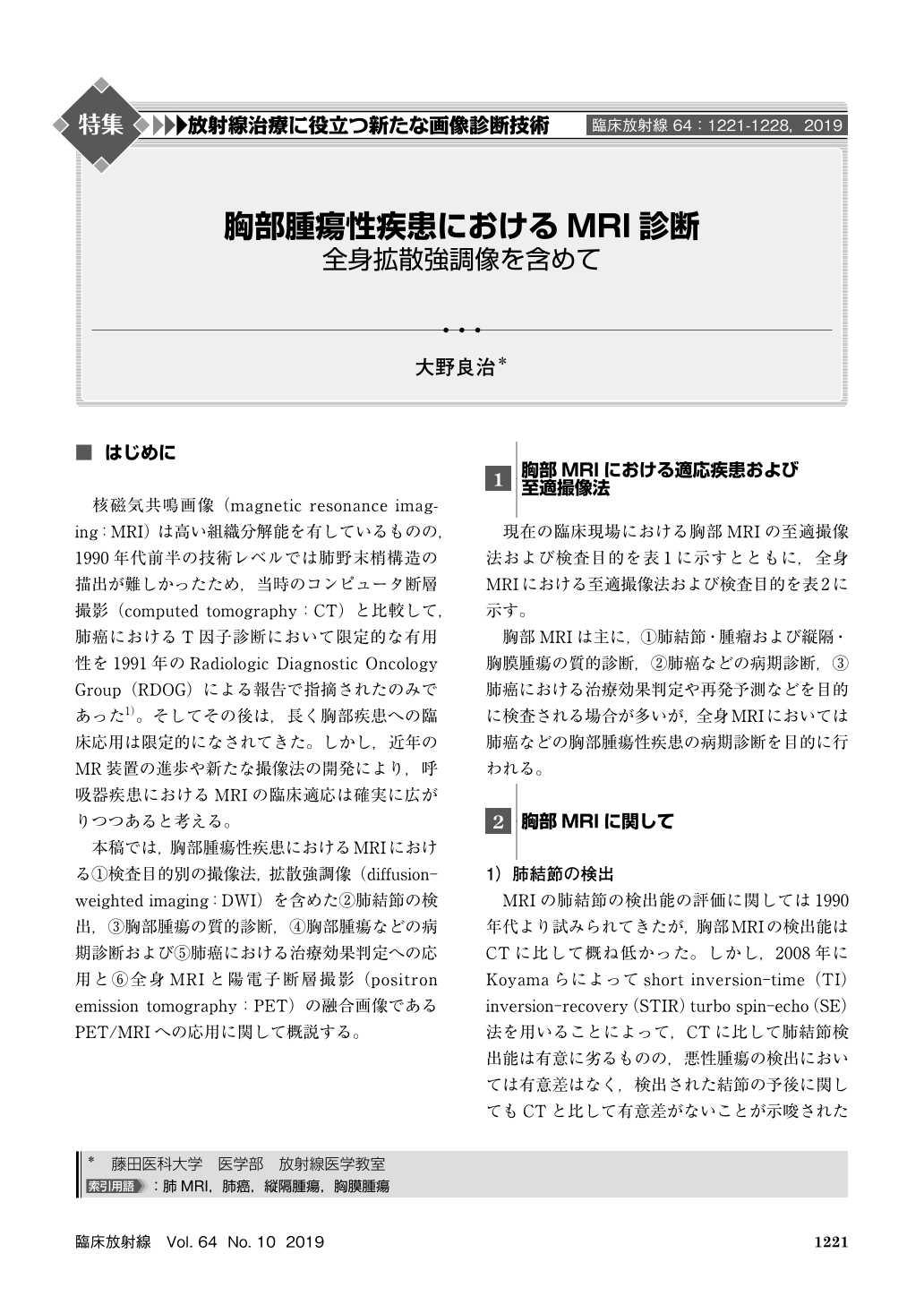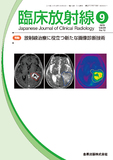Japanese
English
- 有料閲覧
- Abstract 文献概要
- 1ページ目 Look Inside
- 参考文献 Reference
核磁気共鳴画像(magnetic resonance imaging:MRI)は高い組織分解能を有しているものの,1990年代前半の技術レベルでは肺野末梢構造の描出が難しかったため,当時のコンピュータ断層撮影(computed tomography:CT)と比較して,肺癌におけるT因子診断において限定的な有用性を1991年のRadiologic Diagnostic Oncology Group(RDOG)による報告で指摘されたのみであった1)。そしてその後は,長く胸部疾患への臨床応用は限定的になされてきた。しかし,近年のMR装置の進歩や新たな撮像法の開発により,呼吸器疾患におけるMRIの臨床適応は確実に広がりつつあると考える。
Magnetic resonance imaging(MRI)had been clinically utilized for limited clinical questions since the publication of Radiologic Diagnostic Oncology Group in 1991. However, recent advancement of MR system and development of MR sequence makes it possible to improve capability of MRI in various pulmonary diseases. Moreover, it is gradually shifting from 1.5T to 3T MR systems in routine clinical practice. In these circumstances, this paper shows 1)appropriate MR sequences for thoracic oncologic patients, 2)nodule detection capability on chest MRI, 3)capability for differentiation of lung nodule and mass as well as anterior mediastinal and pleural tumor, 4)utility for lung cancer and other thoracic malignancy staging, 5)potential for therapeutic effect prediction or evaluation as well as post therapeutic recurrence detection and 6)new application as PET/MRI in thoracic oncologic patients.

Copyright © 2019, KANEHARA SHUPPAN Co.LTD. All rights reserved.


